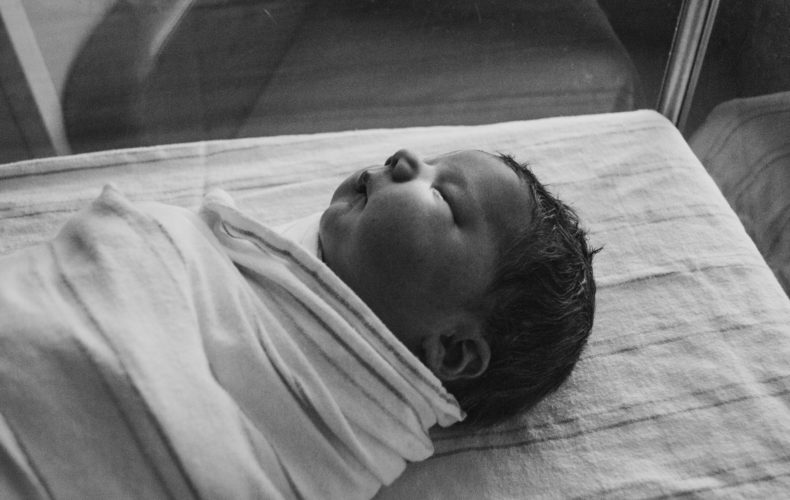35+ GOOD QUESTIONS — for a hospital or birth center tour
This is a list of every question we could think to ask during a birth facilities tour. It’s a freaking lot of questions, guys. You won’t need all of them. In fact, most of them will be answered by your tour guide along the way. And some answers won’t affect your unique birth vision, anyway. So, feel free to use this guide as a way to jog your brain to ask the questions that are most important to you.
We suggest you to ask open-ended, rather than yes/no questions, wherever possible. “How often do you see…?” “What do families who birth here usually choose…?” “How will you support us during…?” “What are the policies regarding XXX procedure or situation…?”
Many of these questions can also be asked of your doctor or midwife during prenatal visits. Sometimes, what a care provider is comfortable with and what hospital policy allows don’t match. It never hurts to double check.
- How many births take place here on an average day? How many of those are caesarean births? How many are VBACs? How many are unmedicated? How many are induced? What induction methods are used most often?
- How often do you see doulas or birth photographers attending births? How do you feel about their presence?
- How many people can be in the delivery room at once? Does that number change during Flu Season? Is there a place for my partner or birth team to rest? Are my older children welcome during labor and birth? Are my older children welcome? Do you have policies in place for unwanted visitors? (Make sure to assess the rooms. Do you feel comfortable there?)
- Are there any situations that may take me away from my birth partner and/or doula? (epidural administration, cesarean birth prep, triage, etc.)
- What are the facility’s policies around birth photography and videography? What are the facility’s policies around doulas? Is there any paperwork that either will need to sign?
- How often are students or residents present during labor? Can I decline their presence if I change my mind about their attendance? Who should I contact if we need to explore a staff change?
- How many nurses/midwives/OBs are on during a shift? How long are shifts and at what times do they end?
- Will I be in the same room for birth and recovery? Will I ever share a room with another family? Are TVs and internet access available?
- What does triage look like — is there a special triage area or a will a private labor room be used? Will my partner and doula be allowed to stay with me? Under what circumstances would I NOT be admitted (i.e, would I be encouraged to leave at under 4 or 6 cm dilation, or a certain contraction pattern like 4-1-1)? How often is there a significant wait for an open labor room? How often are families turned away because there are no free labor rooms?
- Can I decline an IV? Can I opt for a Hep-lock instead of an IV? Can fluids be administered intermittently? Can the IV be disconnected after a course of fluids, antibiotics or Pitocin are finished, or turned off? Will I still be able to use water therapy with an IV placed?
- What is the typical protocol regarding Group B Strep? Is a rapid test available? If I test positive, how often will antibiotics be administered? Will a positive test affect any other part of my labor care or progress?
- Am I encouraged to eat and drink during labor? Under what circumstances would I not be permitted to eat (with an epidural)?
- What is the typical protocol for fetal monitoring and how often will you do it? How many wireless telemetry, wireless patch systems (like the Monica Novii) or handheld doppler systems are available and are they waterproof? How often do you use internal monitoring and under what circumstances?
- How often are vaginal checks usually performed? When is a vaginal check not recommended (i.e.ruptured membranes)? What would you say if I declined a check?
- Will a shower be available to me, and if so where is it located? How many birth tubs are available and where are they located? How often and how long may I use the tub? Will I have to leave for fetal monitoring? How long does it take to set up and/or clean the tub between uses? Will I need to call dibs early? What are the circumstances where I wouldn’t be able to labor in the tub (ruptured membranes, fast labor, none available)? Am I able to birth in the tub?
- What options, aside from the epidural, do you offer for pain management (narcotics, nitrous oxide, sterile water injections)? What options do families choose the most often? Is one method suggested over the others? Are there wait times to be considered? What are some of the most common side effects you see for mother or baby (Will baby need special observation if narcotics are administered less than 4 hours before birth?)
- What is the average wait time for an epidural? Does that change during the night, weekends or holidays? Can my epidural be turned up or down at any point? Does that require my anesthesiologist or OB, or can the nurses do so? What are the most common side effects you see for mother or baby?
- What birthing tools are available (birth ball, peanut ball, squat bar, mirror, birthing stool, labor sling)? Which tools are requested most often? How often do you see families bringing their own tools (such as a TENS unit, essential oils, rebozos, birth balls, heating pads)?
- Will I be encouraged to move freely throughout labor (walking, squatting, lunging, using birth balls/ stools)? Will I need to stay in my room, on the L&D floor, or may I use the facility grounds?
- How will you support me during pushing? Will I be encouraged to “labor down” during the latent part of the pushing stage of labor? How long do first-time families usually push and is there a standard time-limit for pushing? How often do care providers give perineal support or counter pressure with warm compresses during crowning? What is typically used for lubricant (baby soap, Astrogilde/KY)? May I provide the lubricant of my choice? How often are episiotomies performed? How often do you see families experience vaginal tearing significant enough to require repair?
- In what positions do you see families giving birth most often (on their back, on their side, on all fours, kneeling, squatting, upright, on a birth stool, in the tub)? In which positions do you see the least instance of tearing? The most tearing? Will I be able to give birth anywhere but in the bed?
- How long do you usually leave the cord intact after birth? How often do families choose to wait longer than 4 or 5 minutes? What are the policies for the third stage of labor and what techniques are usually used to encourage the placenta to detach? Is immediate postpartum Pitocin administration standard policy? After how long is a placenta considered “retained”?
- Will my baby be placed skin-to-skin immediately after birth? How soon will we be encouraged to begin breastfeeding?
- In the event we experience a cesarean birth, how many support people can be present? Are doulas/photographers welcome in the OR? Can they be on standby to swap out if my support person leaves with the baby? Is skin-to-skin and breastfeeding encouraged in the OR? May I have at least one arm free to hold my baby? What does a “gentle” or “family-centered” cesarean birth look like here?
- What is the typical protocol for baby care immediately after birth? If my baby needs to be checked, weighed or placed on a warmer will he leave my room? How long are you comfortable waiting for examinations after birth? How long are you comfortable delaying baby’s first bath? How often do families decline HepB, vitamin K or Erythromycin administration?
- Is there a release form to sign should I choose to take my placenta home with me? If any tests need to be performed can just a small piece be sent to pathology instead of the entire placenta?
- How will I be supported in the first days of breastfeeding? Who will be there to guide me shortly after my baby is born? Is lactation support offered 7 days a week? Under what circumstances will formula or pacifiers be given? Will I be asked first? What kind of follow-up resources are available for breastfeeding concerns after discharge?
- Will my baby be encouraged to stay in my room? On average how much time will a baby spend in the nursery? Are there any tests or procedures that would be required to be done anywhere other than my room (hearing screenings, circumcision)? Are there any options for baby care if I desire?
- Is there a NICU at this facility? What level is it and what’s the youngest gestation accepted? Where would we be transferred should we need a higher level NICU? What are the typical protocols for NICU transfers? Are there any circumstances where I might need to be transferred to another facility? What, if any, lodging is available to us if our baby has a significant NICU stay?
- Are there specific visiting hours? Are there limits to how many people can visit at once? Do you allow young siblings to visit? Does a birth during Flu Season change anything?
- What security measures are in place? Will a device be placed so that my baby is unable to leave the floor? Do visitors need to be buzzed in and are there security guards present?
- What kind of meal resources are available to me and my partner? What are the cafeteria hours?
- What time does discharge typically occur? How long do families usually stay after an uncomplicated vaginal delivery or cesarean delivery?
- What follow-up resources do you offer for new parents? How and when can I reach out for questions, concerns or emotional support?
- What can we do to help make this a good experience for everyone involved?
* BONUS #1: Good Questions when planning a VBAC: http://vbacfacts.com/2009/06/06/interviewing-care-providers-questions-to-ask/
* BONUS #2: Add “does any of this change with multiples?” to any question if you are expecting more than one baby.
_ _ _ _ _
If you are planning an out-of-hospital or homebirth you may find this list more helpful
If we missed anything please drop us a line and let us know what to add!




